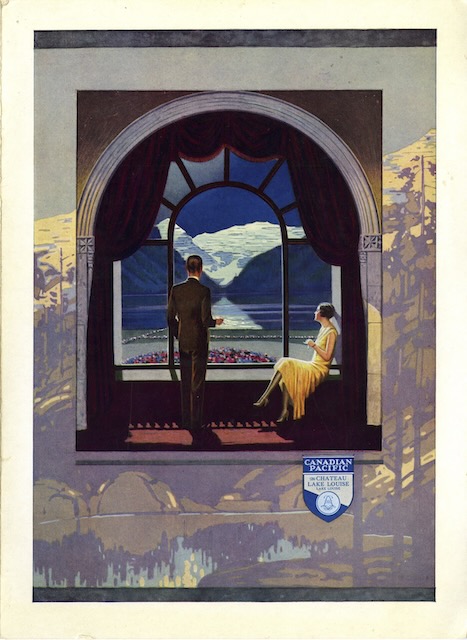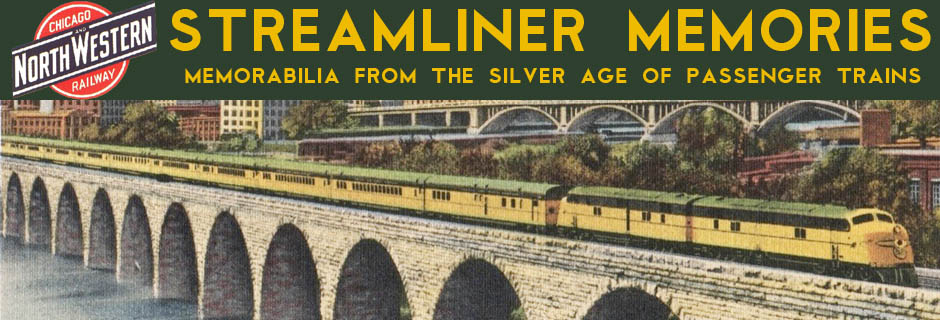Here are two more dining menus from the 1930 E.R. Rochester tour that went through the Canadian Rockies. The tour traveled from Vancouver to St. Paul and Chicago, stopping at Lake Louise and Banff on the way, so these menus were probably used between Banff and St. Paul.
 Click image to download a 1.3-MB PDF of this menu.
Click image to download a 1.3-MB PDF of this menu.
First is an August 14 menu with the same cover image as the one presented the day before yesterday, except this menu is larger than the normal CP menu. Where the other menus are about 6-3/4″x9-1/2″, this one is 8″x11″. Yet that extra space isn’t used for more a la carte menu items; instead, it presents a six-course meal with a choice of four entrées. Moreover, there are no prices, so at least some meals were included in the price of the tour. Continue reading









